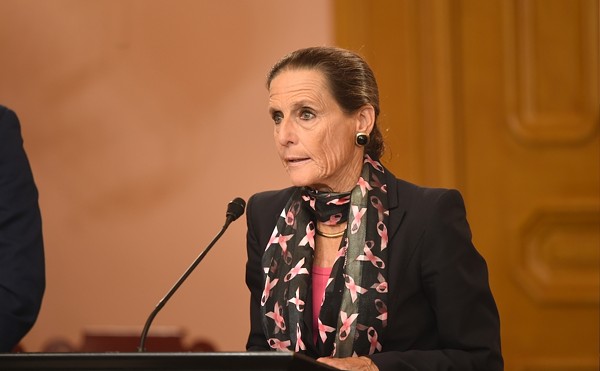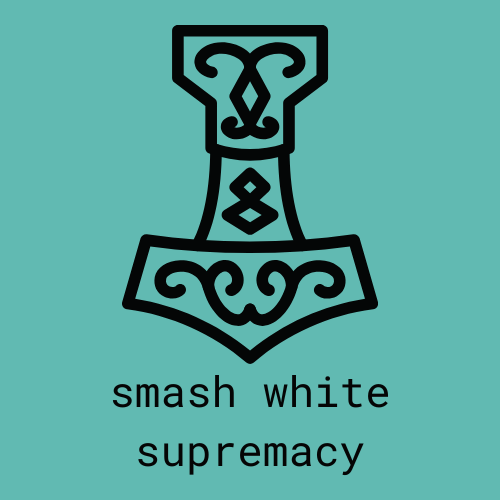A Manifesto in Four Themes by Dr. Rita Segato challenges the historically acceptable violence of patriarchy. Dr. Segato’s Manifesto soothes my soul because it names things as they are – that patriarchy and its accepted norms are inherently violent – and then presents viable, tangible, solutions for a better collective future.
Segato Presents An Alternative To Patriarchy With A Very Possible New Reality
Dear reader, I cannot recommend Dr. Segato’s A Manifesto in Four Themes highly enough – especially for those of us interested in ending the everyday violence patriarchy commits in our communities. While the text can be dense in parts, I ultimately found it to be a very rewarding and mind-blowing declaration of possibilities.
Spoiler alert: a better future involves comprehensive restructuring of how we view politics and domestic life, and it requires much more nurturing attitudes toward the earth and its peoples.
Examining Patriarchy in the U.S. through the lens of Segato’s Manifesto
The idea of white-male-centered power structures is not new. And its related toxicity and violence are also not unfamiliar to us. Colonization, slavery, and the Civil Rights movement shows us how this power structure reacts when threatened.
As Ohio’s maniacal politicians increasingly push legislation reflecting the dangerous ideals of white, far-Right, Christo-fascists, I’ve found the writings of anthropologist Dr. Rita Segato extremely applicable and motivating.
I was completely ignorant of Dr. Segato’s works until recently, when I learned she was the inspiration behind the art Las Tesis’ performance-protests.
This is the second of a series on How to Survive the Death of the U.S.
The Manifesto’s Four Themes
Through her Manifesto, Dr. Segato assesses the power structures and dynamics at play in governments across the Americas and posits the alternative reality required to extinguish the patriarchy and its inherent violence. The four themes are:
- the Centrality of the Question of Gender
- Patriarchal Pedagogy, Cruelty, and War today
- What Hides the Centrality of Patriarchy as the Pillar That Sustains All Powers
- a Politics in a Feminine Key
1. The Question of Gender: Ohio Edition
Family and allegiance to one’s family, inherently centers “the question of gender–” the patriarchal order, which spawn all other forms of power and oppression throughout the Americas, according to Dr. Segato: the state poses the question of who is or is not masculine and then immediately provides the answer.
Current Ohio legislation attempting to define and prove biological sex and naming it gender; attempting to restrict gender and equate it to sex by law; hate groups and legislators alike positing their arguments focusing on family, children, and morals, is no accident. It’s patriarchal order and status quo maintained at all costs.
The endless barrage of anti-trans legislation which conservatives attempt to introduce across the United States, in Brazil, and elsewhere in the Americas is mounting evidence of violence in response to the question of gender.

2. Patriarchal Pedagogy, Cruelty, and War Today
In A Manifesto, patriarchy is defined by Segato as: “relations of gender-based on inequality.”
The hierarchal governmental structures already in place work with monotheistic religions to define and then uphold at any cost, the gendered binary. Despite the separation of “church” and “State” in the U.S., religions can and do, become tools for the State in matters of upholding patriarchy and all that comes with that.
It is from this baseline all other violence, including genocide and global colonization, spring. Gender-based interpersonal violence is, “the first colonial condition,” according to Dr. Segato.
The masculine mandate appropriates women and children’s bodies by force. Dr. Segato terms this conquestiality; due to the violent and ongoing nature of war, loss of life is inherently consequential. We collectively have acquiesced that some groups are simply more likely to be killed, colonized, or “disadvantaged.”
A pedagogy of cruelty as the repetition of violence whereby women and those “othered” because they are not masculine, become “territories” in strategic objectives for political (or social) gain.
We see this to in the shared death and brutality of Black men, women, and children, at the hands of white people; especially when it is by police.
Masculinity Is The First Norm
Ideologies which center masculinity as the first norm further reinforce the masculine mandate; and continually create allowances for patriarchal violence.
Dr. Segato notes that “sexual violence” is inappropriate terminology for rape. She argues that “sex” should be defined as a consensual.
The justification for men to join the cause is identified; one is simply cannon fodder, in the end. While children and therefore “othered,” boys are the first victims of patriarchy via the masculine mandate, “which is a form of rule by rape, has men as its first victims, since gendered violence is also intra-gender violence, among men” (203–204).
3. What Hides the Centrality of Patriarchy as the Pillar That Sustains All Powers
A binary view of other versus self is the glue which holds patriarchy together while also hiding it. Patriarchy socializes us to view individuals in a hierarchal structure – based on our proximity to masculinity. If you’re anything like me, you’ll have to read that over again a few times.
In short, it’s the binary itself that assumes that hierarchy exists: the social and political capital of each of us as it exists, while not something we necessarily explicitly or consciously discuss, reinforces patriarchy; because we assume that there is hierarchal “better,” theoretically, when we adhere to or assimilate, to oppressors.
An example: in the Ohio Statehouse, there are rules and procedures to assume the rule of law and order. While hearings occur to hear opponent testimony for anti-trans and anti-abortion, and anti-CRT legislation, it is usually on short notice, restricted largely to who can speak and for how long, etc.
Despite the obvious inequities present in this process, the majority accepts that this is the matter-of-course, and therefore the status quo and masculine mandate remains in tact.
The public-private binary must be dismantled in favor of intentional, inter and intra-personal, dedication to understanding the “plurality of spaces” (206).
How? Keep reading.
4. Toward a Politics in a Feminine Key
Yes, the good stuff! Moving forward.
Dr. Segato notes that useful parts of community already exist. They’re key to rebuilding in politics in more informal, comfortable, connected, and engaged ways.
- Embracing one’s “racialized image” and understanding what that means is key. It is also essential, in my opinion, for us white folks. Our whiteness allows us to accept the realities of our privileges and how we can lend these to the cause of smashing and destroying patriarchy, setting it on fire, and rebuilding a livable world in the rains that fall afterwards.
- To rebuild community with the fragments we already have, we must stop viewing politics as masculine-dominate.
- Politics “in a feminine key” must soften the hardened and overtly reinforced status quo that inherently separates the domestic life from the political. Politics is inherently viewed as masculine, while feminine ideals for better quality-of-life, greater ease of communication, and less formality are shunned. It is time to lean in to our inherent strengths which are feminine, and shift the norms that uphold patriarchy.
- Build community with a shared history and value system–this is why embracing and understanding one’s racialized image is important and rewarding: when we understand our shared history, we build (feminine) emotional connection.
- Seek and accept yourself and pursue what roots you; not what or who makes you feel better in the moment. Cult mentality and capitalism won’t save us. While sometimes we need to check out, or we become really involved in a singular person or belief, it’s okay to examine if this is actually serving you. Rebuilding collectives without patriarchy involves inner work so you know where you are and how you feel.
In her Manifesto, Dr. Segato presents revolutionary opposition to patriarchy.
Revolutionary ideas birth revolutions.
Segato and her Manifesto challenges white Americans to sit with the uncomfortable truths about patriarchy, and ideas for the future. The ideas are outside of whiteness, heteronormativity, individuality, capitalism, or brutality and war.
The works of Dr. Segato are here for us. Las Tesis used Dr. Segato’s core themes to create an impactful and translatable piece of art. Can we, in the United States, also receive her message?





